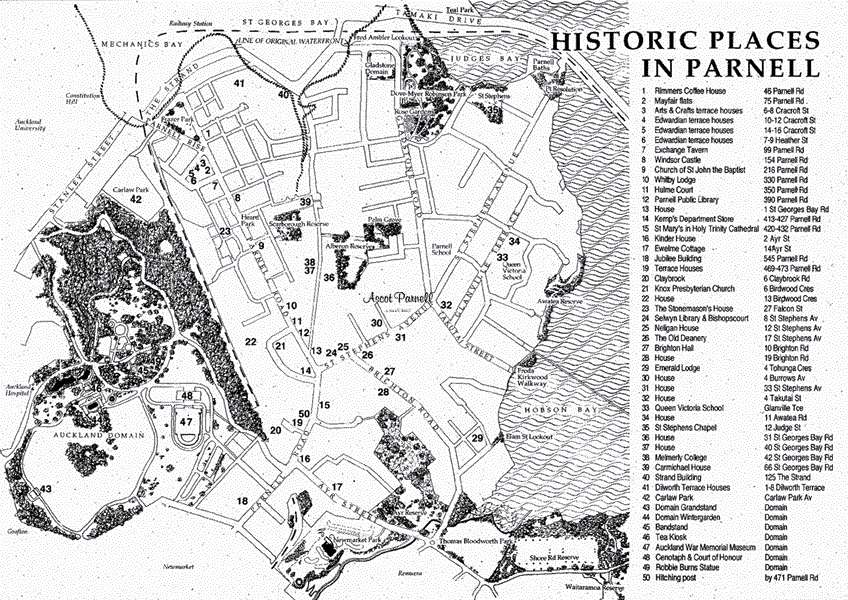| Ascot Parnell : History of Parnell Village | |
|---|---|
 |
| Parnell, contained between the harbour and the Domain is Auckland's oldest suburb. It is vibrant with history. Pukekawa is the Maori name for the Domain, in memory of the dead in ancient wars. There was a Maori Pa at Point Resolution, above the present baths. At the foot of Stanley Street, then waterfront at Mechanics Bay, was a Maori hostelry, canoe reserve and market, not demolished until the 1960s. The purchase of land for Auckland was confirmed in 1841, and blocks of 3-5 acres were sold and quickly subdivided into thirty-six allotments from which grew the village of Parnell. But there was stately development too: Judges Bay was named for Sir William Martin (the first Chief Justice) and Attorney-General Swainson; and John Blackett's house and grounds in St Georges Bay were declared to be the finest in the province'. Bishop Selwyn decided early that Parnell was to be the focus of the Church of England in Auckland, and in 1842 he had chosen the site for its future cathedral. He established a deanery, St Barnabas Church (formerly above Mechanics Bay), St Stephen's School (initially for Maori girls), the Church Grammar School in Ayr Street, St Stephens Chapel in Judges Bay, the first St Mary's Church, and the Cathedral Library and bell tower and Bishopscourt in St Stephens Avenue. Most early settlers were mechanics and tradesmen. They congregated in Mechanics Bay, where the first European suburban and industrial development took place. Early industry included a sawmill, a brickworks, Robertson's Rope Walk, a flour mill and boat-building. From the 1870s first Mechanics Bay and then St Georges Bay disappeared as they were reclaimed for industry, railway and port development. In the early 1850s a bridge crossed the inlet to Mechanics Bay - right where Parnell Rise begins now - and this opened a main highway through Parnell and Newmarket to the farming settlement of Epsom, Onehunga and the south. In the 1870s a railway system saw a bridge over Parnell Road and a tunnel through Parnell Hill. Tramcars ran up Parnell Road in the early 1900s. In 1919 some of the finest foreshore houses were demolished and their land cut away to form Tamaki Drive, finally severing Parnell from contact with the open harbour. For a time Parnell languished. Industry, office, transient accommodation encroached. But Les Harvey, a local property developer, revitalised many of the old buildings along Parnell Road, and so created Parnell Village, the catalyst for regeneration of Parnell both as a tourism centre and prime residential area. |
| More Information… | |
 |